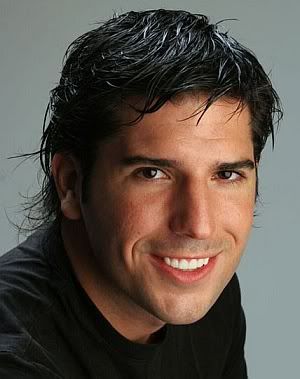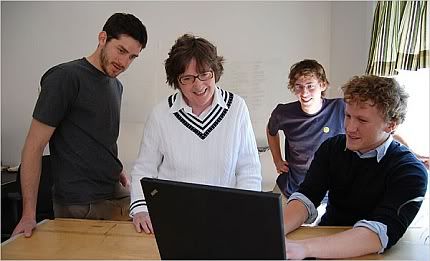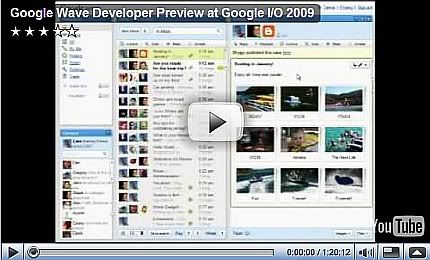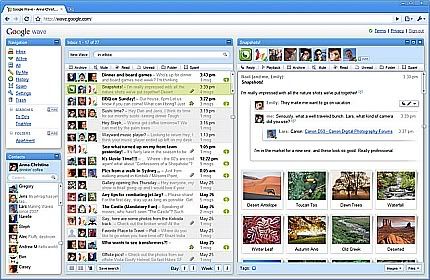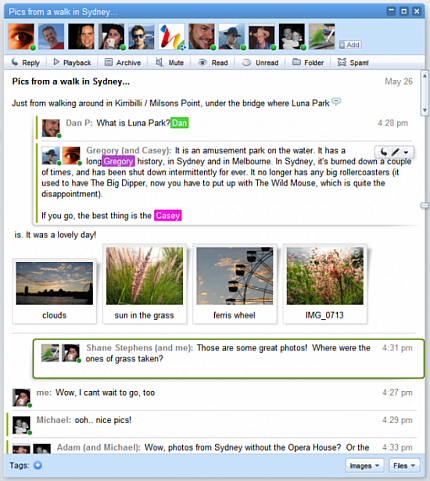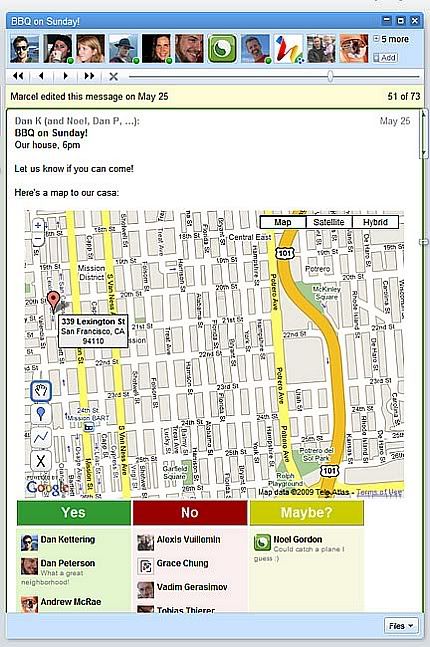| |||||||
miércoles, junio 17, 2009
4 pautas para mejorar el trabajo con Web.
lunes, junio 15, 2009
La Internet del futuro será móvil y de código abierto
| |||||||
miércoles, junio 03, 2009
Pequeñas empresas se estan orientando hacia trabajar directamente en la red Internet.
 | ||||||||
| ||||||||
| COPYRIGHT © 2008 DePapaya.com All rights reserved. |
lunes, junio 01, 2009
Google reinventa el correo e con Google Wave.
| May 28,2009 Google Reinvents Email, Docs with 'Google Wave'. by Mark Hachman |
| Google Wave Video. |
SAN FRANCISCO -- What would e-mail look like if it were invented today, rather than several years ago? Meet Google Wave, a preview application shown off Thursday at the Google I/O conference. The Google Wave site is now up and running, although access to the application will be restricted. Google Wave was developed by the Google Maps team, led by Lars Rasmussen and his brother Jens. "One of the best times of my life was in 2005, just after the launch of Google Maps, when developers started doing crazy things with the APIs," Rasmussen said, adding that he hopes developers will do the same with Wave. What is Google Wave? Think of an open-source version of Gmail constructed via instant messaging. To start a wave, two users start what is essentially an instant-message session, which can be archived as a conversation. Other users can then be invited to join each wave or conversation, and there's even a "playback" feature to track the process of the conversation. Google also said it intends Wave to be a platform as well as a protocol, with the appropriate tools and extensions for each. In fact, it might not even be accurate to call it a reinvention of e-mail. Google executives tied the instant-message/e-mail model to real-time document collaboration, even search, and extended it to the Web and to blogs. Not surprisingly, images can be attached easily. What's fascinating, however, is that those images or embedable objects can also be Wave gadgets: for example, in a demo, a Google Map of Bora Bora was dropped into a wave. However, Rasmussen was able to manipluate the map in real time from his own screen, and the changes showed up dynamically on the screen of Stephanie Hannon, the project manager. Real-time updates seem to be a critical element of Wave. Not only can conversations be updated in real time, but users who allow others access to their wave can allow those users the ability to update thier waves in real time. |
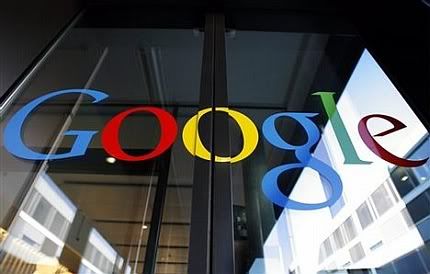 |
Rasmussen displayed the design document overseeing Wave, which featured not only collaborative editing but also embedded conversations within Wave, an interesting tweak to the collaborative toos already inside Microsoft Office and other suites. Want to publish a wave to a blog? No problem. A tool called "Bloggy" allows you to publish the entire wave, which can itself be updated like a normal wave. Rasmussen and Hannon also said that the Google Wave model will be extended to Android for mobile updates. Integration with Firefox was also demonstrated as well. Google will provide APIs so that developers can integrate their own code in to Google Wave. One of the ones demonstrated was with Twitter. Tools called "Searchy" and "Linky" also will allow embedded links and real-time search. Google has come up with extensions called robots, which are embedded tools. The search is real-time, too: in one demo, Hannon searched for "wave". Rasmussen, on his screen, saved his wave as "wav," then again as "wave". When he added the final "e", the document showed up in Hannon's search. Saving it again as "wav" instantly removed it from the list of search results. The team even added a real-time spell-checker. Waves can be made private. Although Google monitors the ongoing waves so that it can add links and other real-time capabilities, making a wave private blocks Google from viewing it at all, Hannon said. In an amazing closing demonstration, adding a robot called Rosie allowed real-time translation, character by character. That closing demonstration earned Rasmussen and Hannon a standing ovation from the assembled developers. No word yet on when Google Wave will be launched, but all I/O attendees will be given accounts for a more in-depth preview, most likely on Friday. |
| Become a PCW Member. Join the community and start enjoying the benefits:
|
COPYRIGHT ©1998-2007 PCWorld Communications Inc. All rights reserved |
domingo, mayo 31, 2009
Nuevo producto "open source" de Google. Google Wave.
| |||||||||||||||



